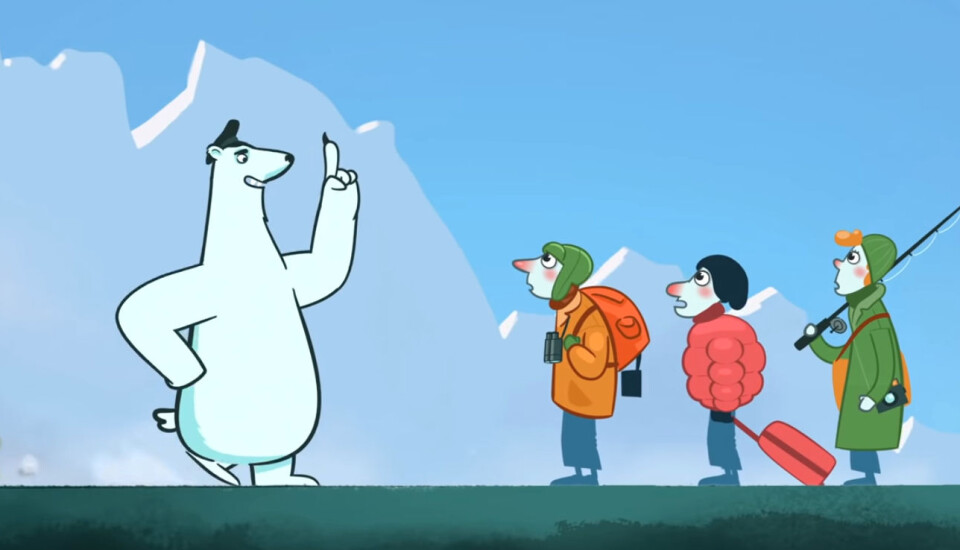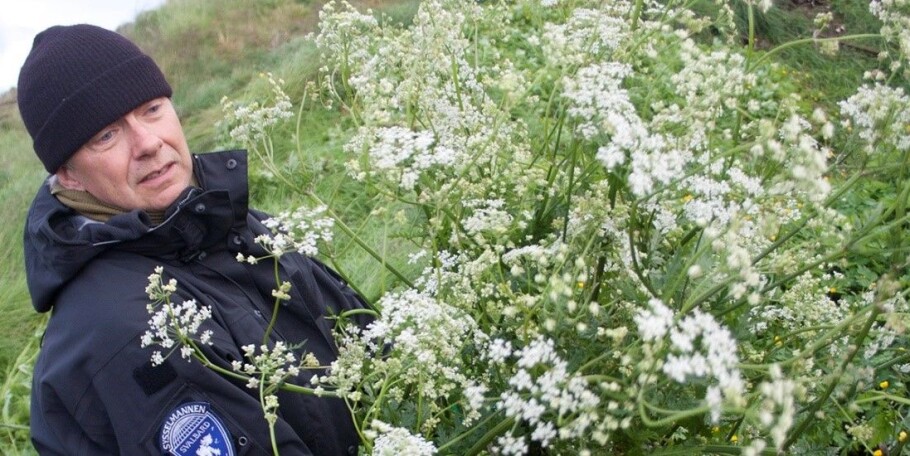This article was produced and financed by NINA - Norwegian Institute for Nature Research - read more

Check your baggage for alien species before visiting the Arctic
Are you travelling to the Arctic? Seeds, insects and parasites can travel with you as stowaways without your knowledge. This bear explains how you can avoid bringing unwanted species that can threaten the vulnerable Arctic environment.Click to add subtitle
“Are you travelling alone?” asks the animated polar bear in the short film as he examines some clothes, shoes and equipment belonging to the travellers that step off boats and airplanes that bring them to the Arctic.
The polar bear in the film is looking for seeds, insects and parasites that passengers may have unknowingly brought with them as stowaways.
Experts on alien species at the Norwegian Institute for Nature Research (NINA), the Swedish Environmental Protection Agency (SEPA) and the Finnish Ministry of Agriculture and Forestry (MMM) are behind the film.
The introduction of alien species by travellers to the Arctic can become a big problem if we do not act now to stop their spread.
Alien species are a big threat

Fortunately, there are some simple steps that travellers can make to protect the Arctic’s flora and fauna
“We would like the film to make travellers to the Arctic area more aware about how they may inadvertently transport alien species to these vulnerable natural areas. It can create enormous problems for the Arctic’s flora and fauna as alien species can establish and displace local species, and ultimately threaten entire ecosystems. Climate change increases the chances that the unwanted species will gain a foothold in the Arctic”, explains Jørn Thomassen, the project leader at NINA.
A message to all travellers
The film is directed as much to permanent residents, researchers and students in the Arctic area, as to tourists.
It is available in 11 different languages and will be spread to as many stakeholders as possible, to cruise ship operators, airline companies, travel agencies and others that transport people to these areas.
The main message is this: You as a passenger can contribute to the protection of the vulnerable nature in the Arctic by taking a few simple measures.
All travellers are encouraged to carefully go through their baggage, clothes and equipment before leaving on their journey, to be sure that they are not bringing along seeds, plant remains or different kinds of insect.
One should brush, hoover or wash baggage and clothes, shoes or equipment. Fishing gear should be disinfected. In this way, travellers can contribute to protecting the vulnerable Arctic environment from invaders from other areas.
The Arctic is especially vulnerable
Alien species are species that humans introduce to an area where they do not naturally belong.
They are globally recognised as one of the greatest threats to biological diversity.
“In the Arctic, alien species are not yet as big a problem as in warmer areas. But they can become so, and they should be carefully monitored, especially because of climate change. A warmer and greener Arctic opens up possibilities for new species to establish. For example, several years ago cow parsley became established in Barentsburg and it has taken a huge effort to remove the species. In addition, the spread of alien species in the Arctic seas should be carefully followed, because it is well known that alien species can be transported in ballast water, as marine garbage or as hull fouling on ships”, explains Inga E. Bruteig, research director at NINA.
Spreading the message
NINA talks to key stakeholders on Svalbard, including the Office of Governor of Svalbard, the Association of Arctic Expedition Cruise Operators (AECO) and travel operators, airline companies, travel agencies and tourist offices that have the Arctic as a travel destination.
The film can be shown when you book your trip or during the journey on boats and airplanes before you arrive in the Arctic.
“This film contains an important message that we all can contribute to preserving the Arctic’s nature with the help of some simple measures. Alien species can become a big threat to the flora and fauna of the Arctic, and we must try to avoid that they are spread to, and establish, on Svalbard”, says Morten Wedege who is responsible for environmental issues at the governor’s office on Svalbard.
The Norwegian Institute for Nature Research (Norway), the Swedish Environmental Protection Agency (Sweden) and the Ministry of Agriculture and Forestry (Finland) have made the film that aims to increase awareness. It is produced by Klipp og Lim, financed by the Nordic Council of Ministers and the Office of the Governor of Svalbard.


































